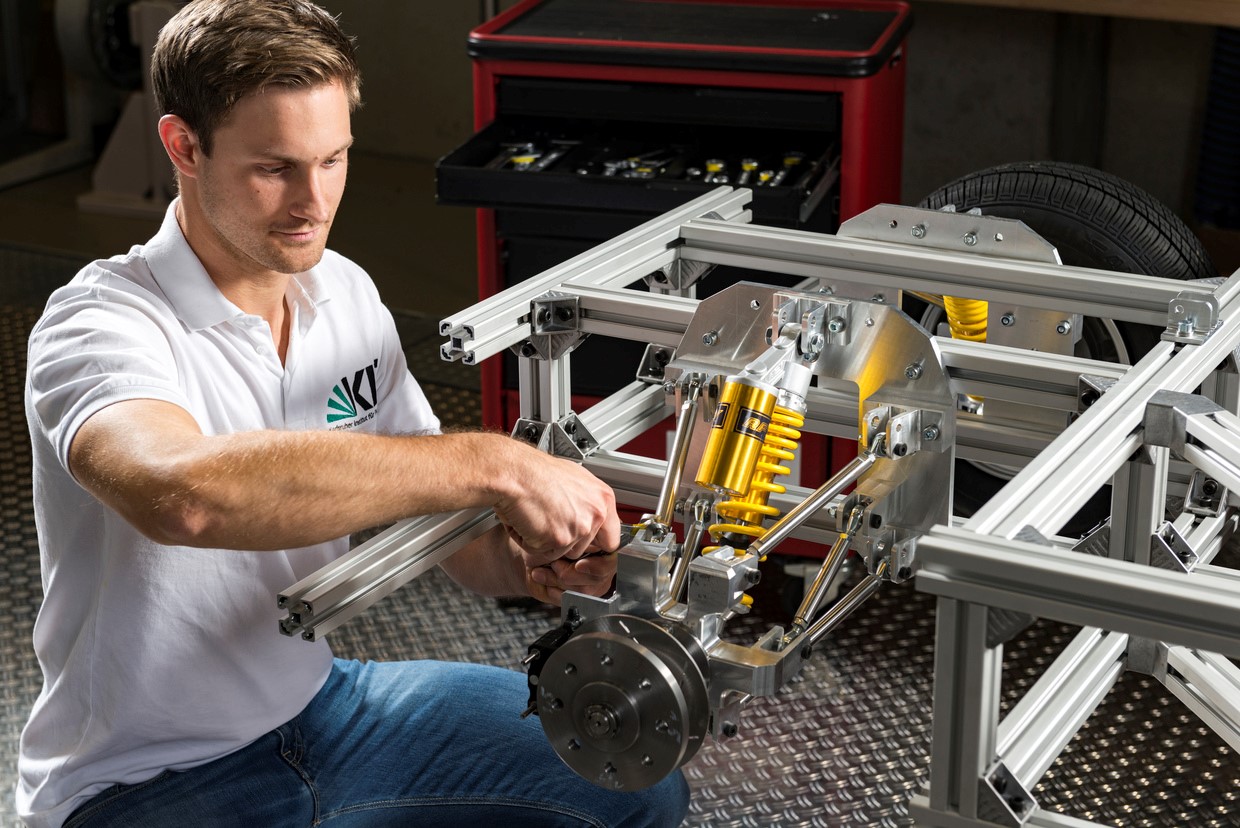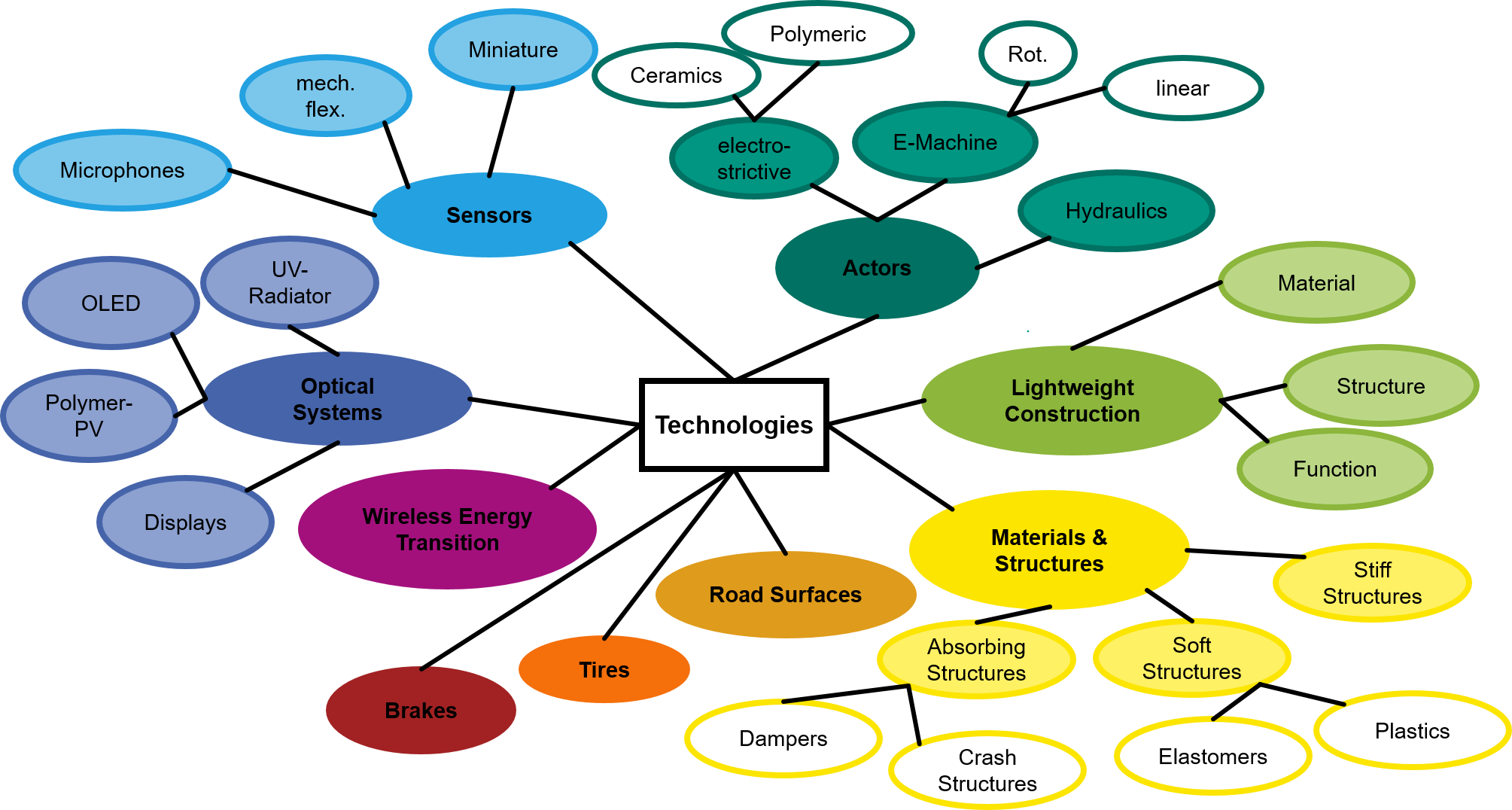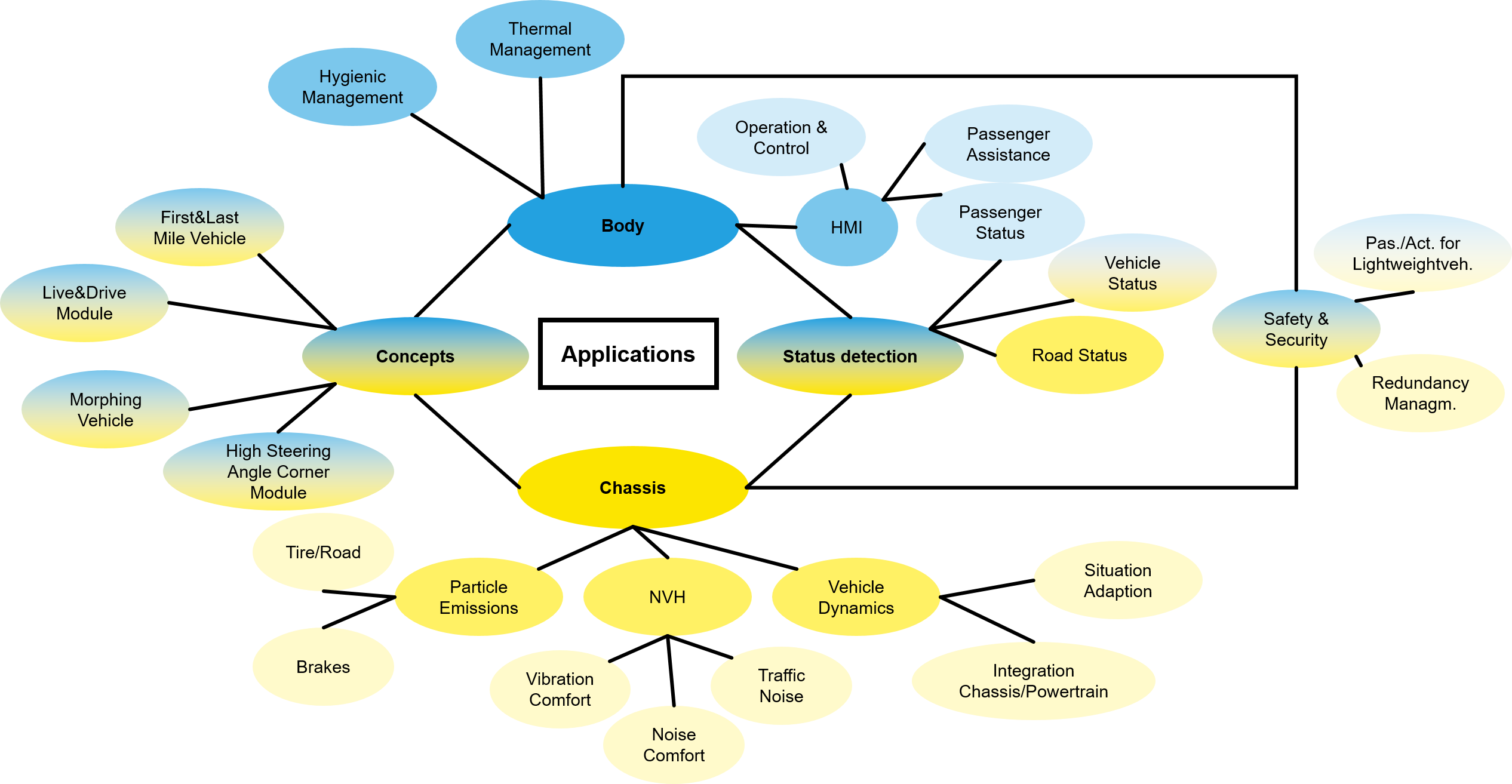Chassis&Body
Introduction
Various research activities relating to the complete vehicle and in particular to the chassis and body of the vehicle are pooled under the “Chassis and Body” topic.
_rdax_500x667s.jpg)

It is focused on interactions of individual components in the vehicle as a mechatronic system. Methods are developed to handle systems interactions in the vehicle development process. Such methods require in-depth studies of the component behavior and physical mechanisms. Using the System of Systems approach, system properties and development of these systems are studied: Vehicle components and concepts for chassis, suspension, damping, steering, brakes, lights, ventilation and air conditioning systems as well as the interaction between tires and road surfaces. Research also focuses on sensors, actors, optical and acoustical systems. This covers as well Human-Machine-Interfaces including driver assistance systems and operation. Therefor the topic focuses on concepts to improve noise, vibration, thermal comfort, vehicle dynamics, particle emissions, safety and security. Operational strategies as well as statusmonitoring and failure detection complement the research activities .
Thanks to their comprehensive, application-oriented work, the institutes working under the topic of “Chassis and Body” are attractive cooperation and research partners of industry. Multidisciplinary cooperation results in a systems competence that is hardly matched by other, also international universities in terms of depth and comprehensiveness.
Research Focus

Technologies
Research in the topic deals with numerous different technologies and individual components that are necessary for the fulfillment of functions and the overall system. These technologies include: Actors and Sensors, Optical Systems and Wireless EnergyTransmission, Lightweight Design, Materials & Structures, Road Surfaces, Tires and Brakes.
Methods & Processes
In addition to the further development of individual technologies, the researchers involved also deal with methods and processes in the development and testing process. The methods and processes used and constantly evolved include: Modeling & Simulation; fast, robust Tools, the AI-based Specification of Subsystems and Testing at various development stages and from the components to the overall vehicle level.
Applications
The technologies, methods and processes described above are used in various areas of application, fundamental considerations derive requirements for vehicle concepts in the respective application. In addition to the main levels of chassis and body, this also includes the area of operational strategies, status and failure detection, as well as safety & security.
Associated Institutes
ETI-HEV - Institute of Electrical Engineering - Hybrid Electric Vehicles
FAST - Institute of Vehicle Systems Technologies
IAM-WK - Institute for Applied Materials - Materials Science and Engineering
ITM - Institute of Engineering Mechanics
ifab - Institute for Human and Industrial Engineering
IPEK - Institute of Product Engineering
ITAS -Institute for Technology Assessment and Systems Analysis
WBK - Institute of Production Science
ITIV - Institute for Information Processing Technologies
ITCP - Institute for Chemical Technology and Polymer Chemistry
LTI - Light Technology Institute
IEB-FBTA - Institute for Building Design and Technology - Building Science Group
MVM - Institute for Mechanical Process Engineering and Mechanics
Interfaces
- to other topics within the KIT Mobility Systems Center
- to other KIT Centers, in particular
- Profilregion: High Performance Center for Mobility Research
- InnovationsCampus Mobilität der Zukunft



